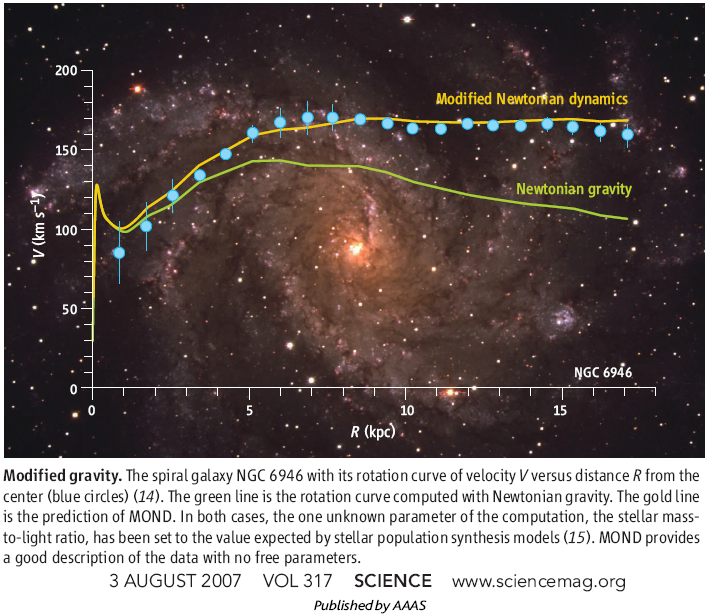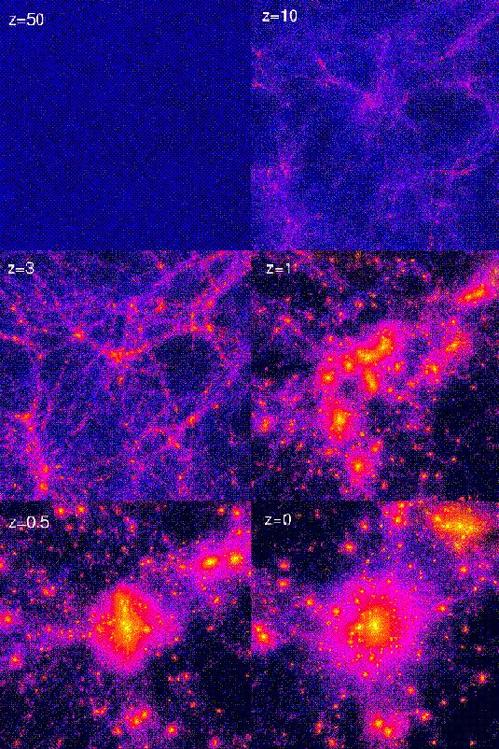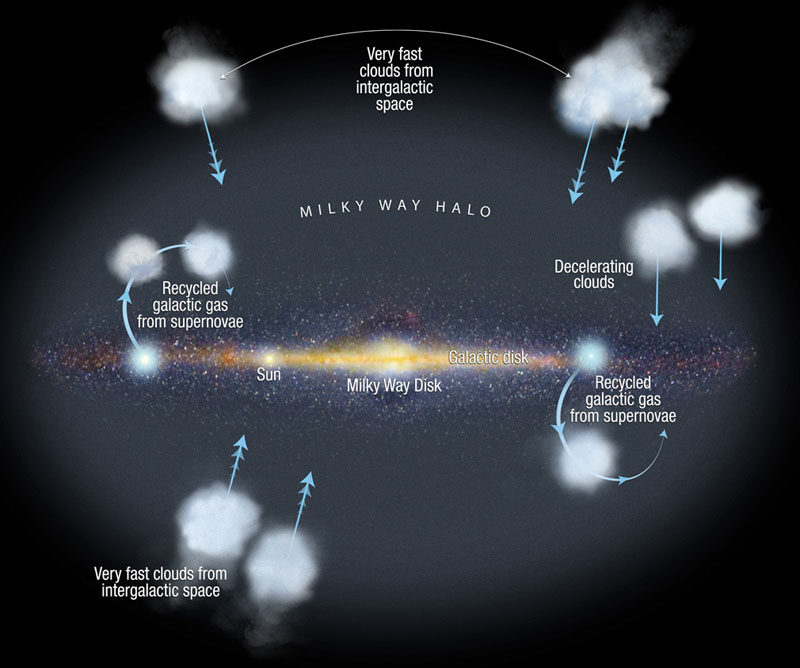Anyone who hates dark matter
When you make a discovery yourself - even if you are the last person on Earth to see the truth - you will never forget it.
- Karl Sagan
When we argue about dark matter (TM) and its alternatives, we are talking, no more, no less - about the task of explaining the structure of each large object of the Universe. And this is each of the billions of galaxies, as well as their formation, association and grouping.

On the largest scales - on which each pixel of the map above represents a whole galaxy - TM easily surpasses all competitors. None of the competitors of TM is close to its success in explaining the large-scale structures of the Universe.

')
But this does not stop the flow of sensational headlines . For obvious reasons, we feel uncomfortable due to the fact that we are not the most important thing in the Universe. We objected to the fact that the Earth is not the center of the Universe, we objected to the fact that the Sun is just an average star hand, we objected to the fact that spiral nebulae in the sky turned out to be other galaxies similar to ours, and now we object to that that all the substance of the Universe known to us - protons, neutrons, electrons - means relatively little in comparison with the amount of TM in the Universe.

And although TM still remains the only theory that has been successful on a large scale - for galactic clusters, superclusters and filaments, microwave radiation fluctuations, the Big Bang nucleosynthesis, gravitational lensing, etc. - its alternatives win it in one place - in the case of individual galaxies.
In which case is it so?

This is the spiral galaxy NGC 6744 , which is often called the twin of the Milky Way. It is slightly larger than ours, but according to the measurements of the structure of our galaxy, including the jumper and spiral arms, most of all resembles our of all the galaxies we studied.
When we look at spiral galaxies, we see the relationship between the rotational speed and the distance from the center. This relationship is very simple, and is best described by an empirical, phenomenological (that is, inspired not by physical theories, but by data) model, known as the modified Newtonian dynamics (MOND). One can come to this theory in different ways, including by postulating the presence of a dielectric gravitational medium in a space vacuum.

You can stuff a non-conductive material into the electric field, consisting of positive (nuclear) and negative (electrons) charges. The dielectric reacts with the electric field, polarizes and changes the electric potential of space.
This analogy could be used for gravity if there were negative masses and some gravitational dielectric. This idea has been around for a long time, and Dragan Hajdukovic’s new work made a lot of noise , saying that virtual particles of antimatter are playing the role of negative mass. And this could explain why galaxies look that way.
Of course, it would be necessary to explain everything else that TM explains, and would have to abandon several important things, in particular, the Einstein equivalence principle. Not that TM was a panacea - it always had problems with individual galaxies, such as the Milky Way or NGC 6744.
What problems? Having modeled the formation of structures of individual galaxies using TM and normal matter in the expected proportions, we get some problems.

First, galaxies take a long time to achieve great brightness. Looking at the past of the Universe, we see very bright galaxies - some even brighter than today's Milky Way - and this is when the Universe was only 1-2 billion years old! It was believed that galaxies resembling the Milky Way took much longer to form, and if they became so bright for a long time, they would simply run out of gas to form new stars. In addition, all the simulations give us large central thickenings that are too large and too bright to explain them with ordinary dark matter, and not quite suitable structures for the appearance of spiral arms.
Wouldn't it be interesting if we would solve these problems and explain the galaxies of our Universe — by resolving the last great difficulty of TM — without having to turn to alternatives?

And so, in 2011, we successfully calculated where the material for the formation of young stars in the Milky Way comes from: these are high-speed intergalactic gas clouds! On average, the gas reaches the Milky Way every year, comparable to that of the sun, replenishing the reserves of the gas used to form new stars.
What about the second riddle, the reproduction of the structure of the Milky Way?
Thanks to another study and new simulations (on video), we can successfully recreate a galaxy of the Milky Way type using the dark matter model! Success!

I know that someone will still have his opinion until a piece of dark matter hits his face to tears, but for TM these discoveries mean great progress. There are still worthy alternatives, but they have a long way to go to catch up with this theory.
And now, even if my parent company insults TM and advertises alternatives, I say to myself: “all haters go to the left”, and happily basking in the rays of the tremendous success of the best theory of the structures of the Universe: dark matter.
Source: https://habr.com/ru/post/399195/
All Articles